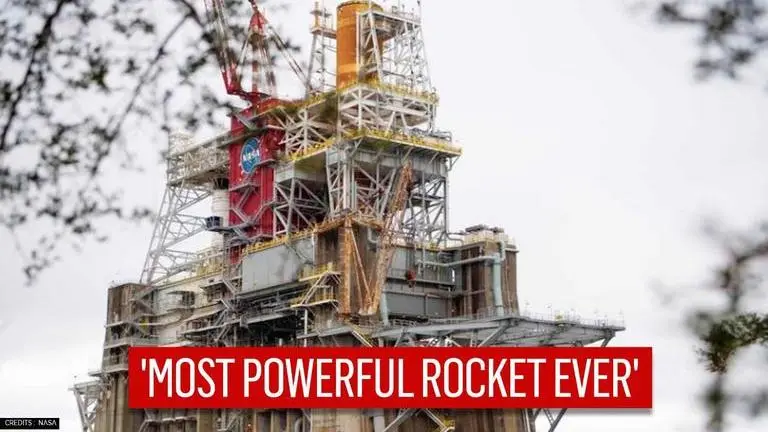Updated 10 January 2021 at 20:34 IST
NASA to lift off 'most powerful' Space Launch System (SLS) rocket on January 17
In the Green run test, NASA ignited the liquid fuel engines in the core stage of the Space Launch System (SLS) without lighting the solid-fuel boosters.
- Science News
- 3 min read

NASA on January 9 conducted a Green Run hot fire test for its massive Space Launch System (SLS) rocket which is set to be launched as early as Jan. 17. In the historic eight-part test campaign of the most powerful rocket ever built by the space administration, NASA ignited the liquid fuel engines in the core stage of the Space Launch System (SLS) without the solid fuel boosters ignition. The rocket will power the next-generation human Moon missions of NASA’s Artemis program.
In an official statement, NASA said that SLS will transport weight that can go up to 27 tons (24,000 kilograms) to the moon, which is slightly less than Saturn V. The 322 feet tall (98 meters) rocket is 363-foot (110 m) Saturn V rockets that transported humans to the moon but the space agency will refurbish the core stage and dispatch the ship SLS to the agency's Pegasus barge of NASA’s Kennedy Space Center in Florida.
This week...
— NASA (@NASA) January 9, 2021
🔥 🚀 An update on the Green Run hot fire test for @NASAArtemis I
👋 🛰️ @NorthropGrumman's #Cygnus departs from the @Space_Station
🌖 💡 University students present ideas for exploring the Moon
Watch: https://t.co/xbieNdI80R pic.twitter.com/I7tGB1zjij
“During our wet dress rehearsal Green Run test, the core stage, the stage controller, and the Green Run software all performed flawlessly, and there were no leaks when the tanks were fully loaded and replenished for approximately two hours,” SLS Stages manager at NASA’s Marshall Space Flight Center in Huntsville, Alabama, Julie Bassler said in NASA’s release.
“Data from all the tests to date has given us the confidence to proceed with the hot fire,” she added.
Advertisement
All 4 RS-25 engines ignited
In the Green run test, all four of the stage’s RS-25 engines were ignited simultaneously for at least eight minutes followed by a firing at Stennis. “SLS stage will be assembled with the other parts of the rocket and NASA’s Orion spacecraft in preparation for Artemis I, the first integrated flight of SLS and Orion and the first mission of the agency’s Artemis program,” NASA informed.
The project manager for the SLS core stage Green Run testing at Stennis, Barry Robinson, called the next few days for the space agency as ‘critical’, as the team will prepare the SLS for the Artemis I rocket stage and B-2 Test Stand NASA’s Stennis Space Center. NASA will also appoint a test team for the finale of the Green Run test series. “The Green Run hot fire test is the culmination of a lot of hard work by this team as we approach NASA’s Artemis missions,” Barry Robinson said. NASA informed in the release that testing the SLS rocket’s core stage was a combined effort of the space agency and industry partners. Boeing was NASA’s prime contractor in the core stage and Aerojet Rocketdyne, the lead contractor for the RS-25 engines. “Prior tests in the Green Run test series evaluated the stage’s avionics systems, propulsion systems, and hydraulic systems,” NASA explained.
Advertisement
Published By : Zaini Majeed
Published On: 10 January 2021 at 20:34 IST
